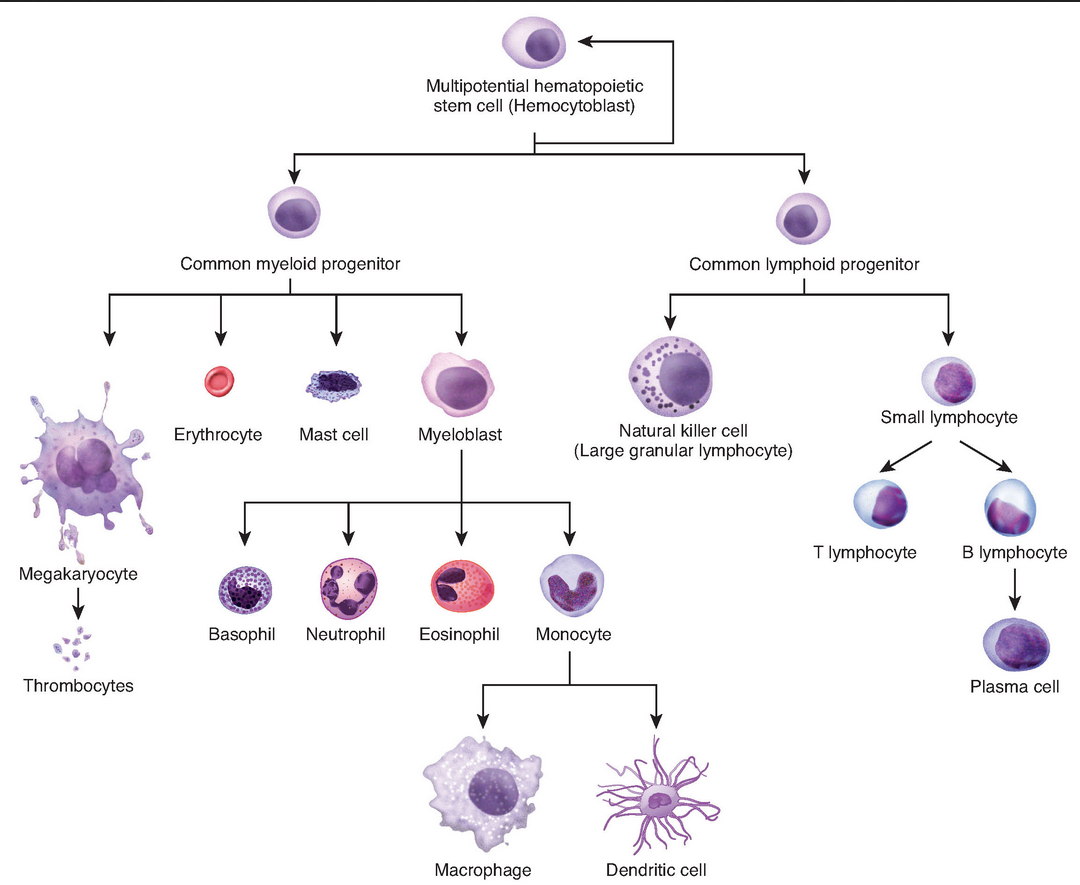In other words, is there any individual cell that can decide between two or more options, or all they all solely chemical and mechanical reactions without any self-determination at all?
“self-Determination” and “decision-making” are conscious, complex processes. A single cell is incapable of that.
On the other hand, how do we as humans form decisions? We use sensory input from various organs, process those by combining with existing knowledge/memories and form decisions based on that. But in the end, it’s still all based on “chemical and mechanical reactions”.
You quickly get into philosophical territory there: is our conscious self more than the sum of all the processes in our brain? Is there some extra “spark” that allows true self-determination, or are all our decisions a given result of the exact state of our brain and body?
I think you’re projecting consciousness onto those terms more than you need to. An algorithm is a decision-making process devoid of consciousness (as far as we know). AI is capable of self-determination in as far as it’s capable of acting without reacting, or without total dependence on input. We just need our self-determination and decision-making to be special, so we present them as functions of our consciousness.
And a curse on any philosopher that tries to define consciousness as some variation of “that thing that makes human special”, any work they build on that is doomed.
I think that the illusion of free will is based on the fact that we’re conscious and thus have preferences and since decisions naturally tend to align with said preferences it then feels like we’re in control. However, nobody chose their likes and not-likes.
I think Brian Greene put it nicely; we don’t have free will but we have the experience of freedom
Immune cells form from stem cells. From start to finish in the stem cell differentiation process, four major changes occur. Some of these changes can have up to four potential outcomes each. Here’s a map:

While all cells react to their environment based on environmental stimuli and feedback loops, even bacteria and archaea, this is a great example of cell differentiation. All our cells started as stem cells, but the immune system’s continuous and consistent use of the process is very unique. It’s also the most elaborate and the image is surface level. Most the end cells pictured here will become more specific. Like there’s many different T-cells, even T-cells which change so much they don’t meet the classification of being a T-cell. The CD16 T-cell is a great example of this happening.
I feel like this is what you were looking for, but I’m not totally sure.
Thanks! Is there a point during which any of these cells makes a decision that is not 100% mere chemical or mechanical reaction to their immediate environment? Perhaps when they need to differentiate into a new cell?
I mean, cellular/molecular biology is applied organic chemistry. It’s all chemical based in some way or another. I guess with T and B cell receptor formations, each receptor binding domain is made totally at random. So much so, they go through training to ensure they won’t attack self and are able to detect pathogen associated molecular patterns. Wildly, most T and B cells don’t pass training and get recycled, more or less.
So maybe, but you’re talking about the world on the cellular level, it’s all based on chemical reactions with environmental stimuli. To be alive requires responding to your environment, and chemistry is how that works at the microscopic level.
The function is in the interconnection and collaboration of the parts of the system. A screw or a round rubber also doesn’t drive you to work. It’s the whole car consisting of several parts that work together that does it. Also a single cell is a tiny part. There isn’t much in a single cell if we look at a complex process like making a decision.
Just to spur this question on a bit, I know from my limited knowledge that cells can kill themselves when a mutation has occurred. But that’s also a sort of biochemical reaction. To be honest, what is truly self-determining? Is it simply a property of the nervous system? My thoughts are leading in that direction to be honest.
There are good answers about differentiation from stem cells, process governed by the evolutionary determined genetic information stored within the cell itself. This genetic information was/is influenced by environment but that influence tends to be slow and subtle.
I have another answer to contribute. Metastatic cancer cells. These are cells which detach from primary tumors in any part of the body, then have to break into the lymph or blood and then they in a sense “decide” where they want to settle. We now know they’ll have preferences: some cancers will metastase to liver, some to lung, some to brain; but before they do so, these cells will literally circle around the body, searching for a “perfect spot”. Once they find it, they settle, often entirely changing their O.G. tumorous behaviour in the process which in return makes them super unpredictable and hard to kill. And all it takes is one wandering cell.
Super interesting! Why do we think that they decide, and how do they make that decision??
A “decision” is highly complex emergent behaviour. Looking for it in a single neuron is like asking if there’s a single air molecule where a gale started. We almost certainly will never identify single neurons corresponding to single mental ideas. A “go to the cinema” neuron versus “go to the park” likely don’t exist. What is more likely is that large ‘flows’ of neutral activity correspond to these things or to what we call ‘decisions’. However when we think of more and more specific mechanical things (like lifting a finger) then it’s more likely this corresponds to very small areas of neurons that controlled their activation and it makes a bit more sense to talk about that being a switch to ‘decide’ to move a finger. But the decision itself is actually the vast cloud of neutral activity leading into it not a single thing.
Interesting! This is what I was getting at. I’m trying to figure out at what level decisions are made and how are they made. From what I can tell so far, it seems like neurons act as nodes that either fire or not based on the information they receive from previous neurons. The information they receive from previous neurons either encourage or discourage activation, each at a different strength. Once a neuron receives enough encouragement to fire from the previous neurons, it fires and sends its signal to the neurons it is connected to, which they take as encouragement or discouragement. In a sense, decision-making is a series of very long logistic regression models. Each previous neuron serves as a predictive factor with it’s own polarity (encouragement or discouragement) and coefficient (magnitude of signal). Learning is changing the values of coefficients so that predictive factors have different impacts on the outcome variable. With this in mind, then at least 2 neurons are needed to make a decision. The more neurons, the more variables can be included in the decision making process. Does that make sense?
That’s how neurons work, yes. But you can’t reduce a “decision” down to a single neuron. It depends what you mean by decision really. Do you mean “the smallest thing that can affect something else”, in which case, yes, neurons are the smallest unit (it seems) of brain function. But not consciously so.
Or do you mean the collective input that goes into the brain generating an output? In which case, the brain appears to function more with swarms of neurons firing together. You won’t find any examples of a single neuron affecting, say, the choice of going to the cinema. We don’t know the brain in enough detail for that, nor does it seem possible for it to work that way (neurons die and are replaced but our behaviour and decisions seems far more stable).
Or do you mean the conscious experience of making a decision (free choice)? Which is a different thing again. The mechanics of the brain operating input and output and the conscious experience of it are not the same thing. They may be generated by distinct but overlapping parts of the brain. Often in step but not always. Conscious choice can’t have elements of it reduced to single neurons, brain experiments seem to frustrated any attempt to turn up evidence for that.
Whatever it is we colloquially mean by making a conscious decision about something doesn’t exist on the neuron level. It exists on the millions of neurons acting simultaneously level.
By decision, I meant anything that was more than mere chemical or mechanical reaction. Another way of separating it is the point where we can say there is a purpose or difference between dead molecules and being alive. In this case, going to the cinema is wayyy too advanced a decision to help define. More like a cell or group of cells that recognizes its environment and has the opportunity to decide to go towards one direction over another rather than respond merely because a chemical in their environment reacted with their body in a way that gave them an impulse.
But in the larger picture, it seems like there are many decisions that occur for us to commit a behavior. For example, we have to decide what we perceive, decide what our emotional state is, decide what our memories are, decide our personal taste for movies, decide our current motivational state, decide if we have enough time, etc, be fore we decide to go to the movies. All those have to happen prior to deciding on the cinema, and the majority of them occur simultaneously with a central network organizing them into a coherent process, correct? Omg, is this central network what people call executive functioning‽
I’m afraid you are not going to find anything in the brain except “dead molecules”. There isn’t anything in there except the laws of physics and chemistry acting out like clockwork.
But in terms of the scale of how “decisions” work. Then, yes, far simpler decisions (perhaps better to say “reactions”) happen with relatively few neurons. The complete brains of small insects have been mapped by researchers, maybe several million neurons. They can detect movement reactions happening in response to stimuli.
This though is a very different thing to what people mean when referring to their conscious decision to do something.



